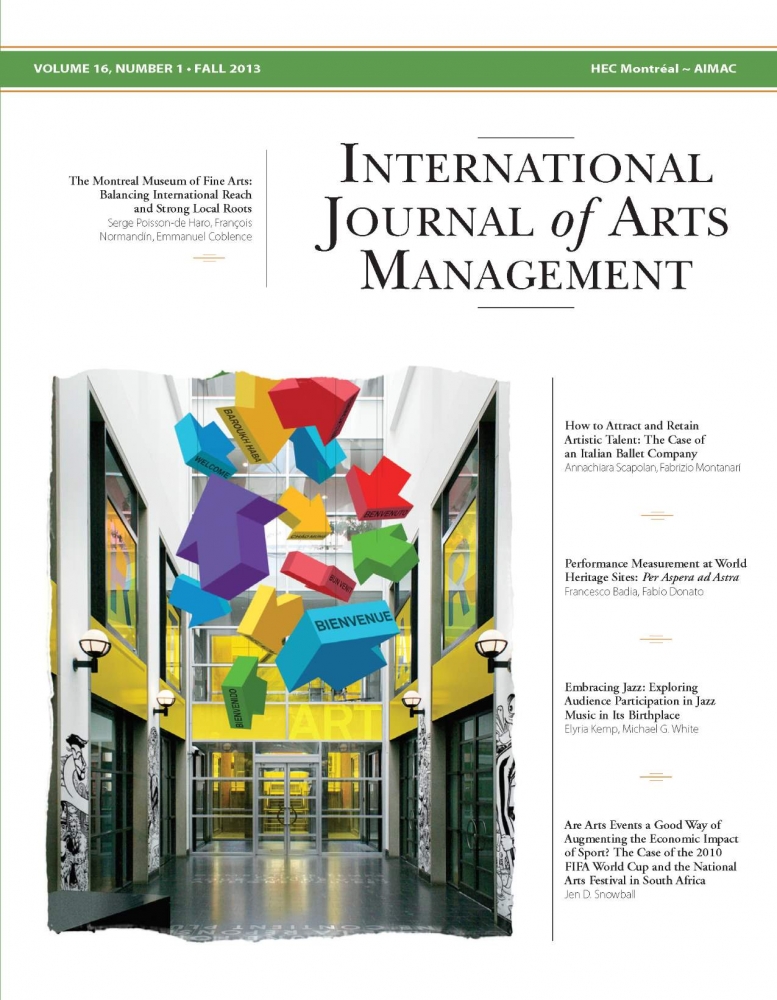IJAM Volume 16 Number 1 (PDF)
Product: Journal
$53.00 CA
EDITOR’S NOTE
Dear readers,
I had the enormous pleasure of attending the 12th International Conference on Arts and Cultural Management (AIMAC) in Bogotá, Colombia, from 26 to 29 June 2013. Our first meeting in Latin America was memorable. The incredible work by Jaime Ruiz-Gutierrez and his team was certainly apparent, leading us to discover the beauty of Colombia’s art and culture. The participants, members of the Scientific Committee and members of the IJAM editorial board were delighted with our visit to Latin America. There were more than one hundred presentations, involving 25 different countries, with over two hundred participants registered at the conference. The quality of the presentations was excellent, and we saw new faces, indicating that the field of arts management is drawing more and more interest. We hope that this is just the beginning of a relationship between AIMAC and Latin America!
In this issue of the Journal, the first article deals with a highly relevant theme in the arts community, namely attracting and retaining artistic talent. Annachiara Scapolan and Fabrizio Montanari tackle the topic by analyzing the case of the contemporary ballet company Fondazione Nazionale della Danza Aterballetto. The renown of the choreographer and the company itself prove to be important factors. Next, Francesco Badia and Fabio Donato propose a method for evaluating the performance of UNESCO-classified heritage sites. Their analysis shows a need to develop an economic and managerial culture in this respect. The third article is aimed at better understanding the factors behind the decline of jazz audiences in New Orleans. Through a qualitative study, Elyria Kemp and Michael G. White identify barriers to the consumption of this art form. Jen D. Snowball invites us to better understand the relationship between arts and sports audiences through a study of two events held in South Africa: The National Arts Festival and the 2010 soccer World Cup. The results suggest both a complementary and a competitive nature. Lastly, Serge Poisson-de Haro, François Normandin and Emmanuel Coblence explain how the Montreal Museum of Fine Arts has been able to develop a significant international profile while maintaining a solid local focus.
Happy reading!
Johanne Turbide
Editor
